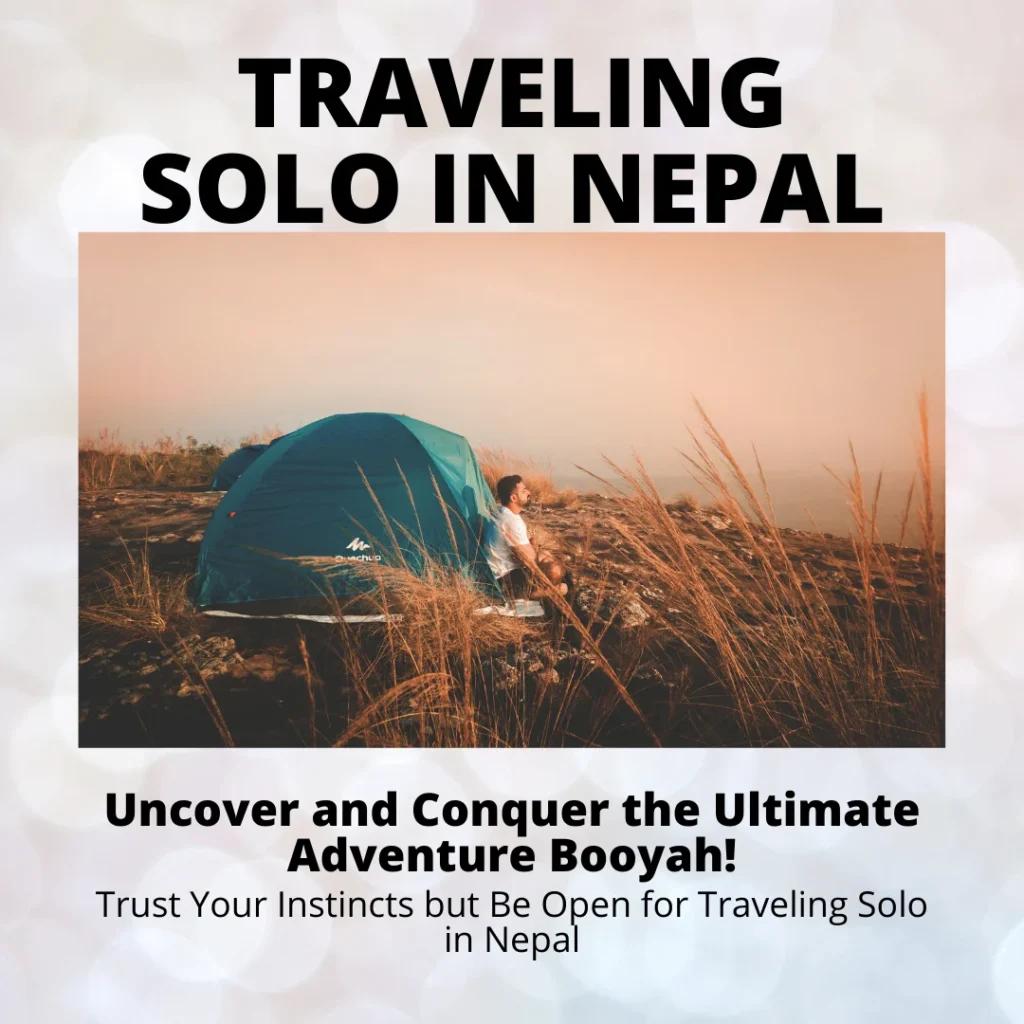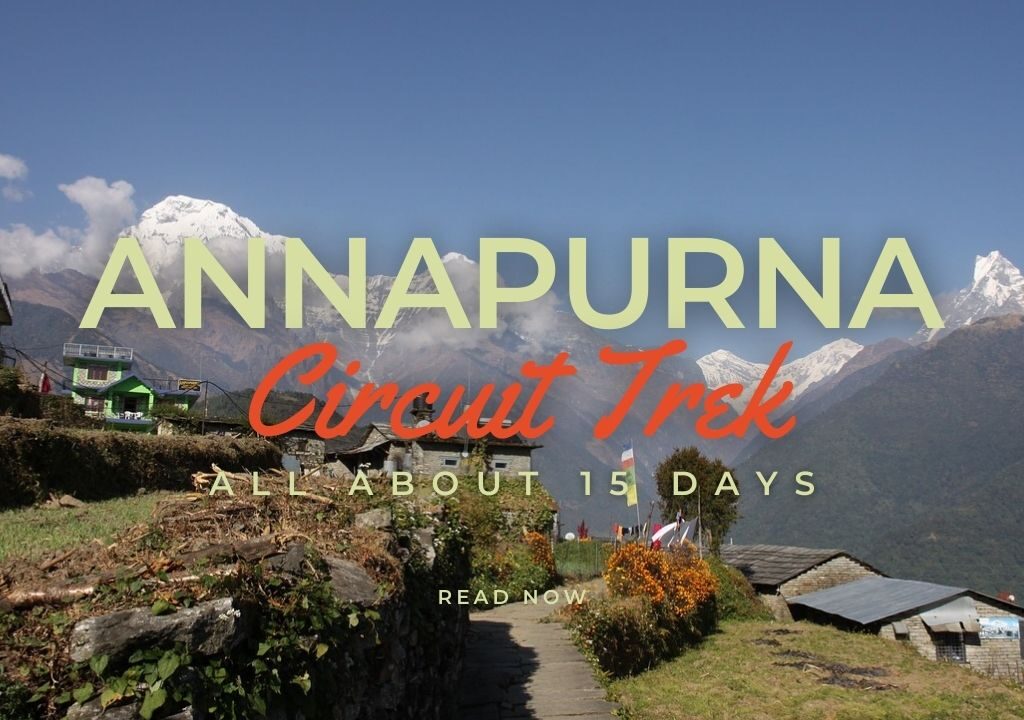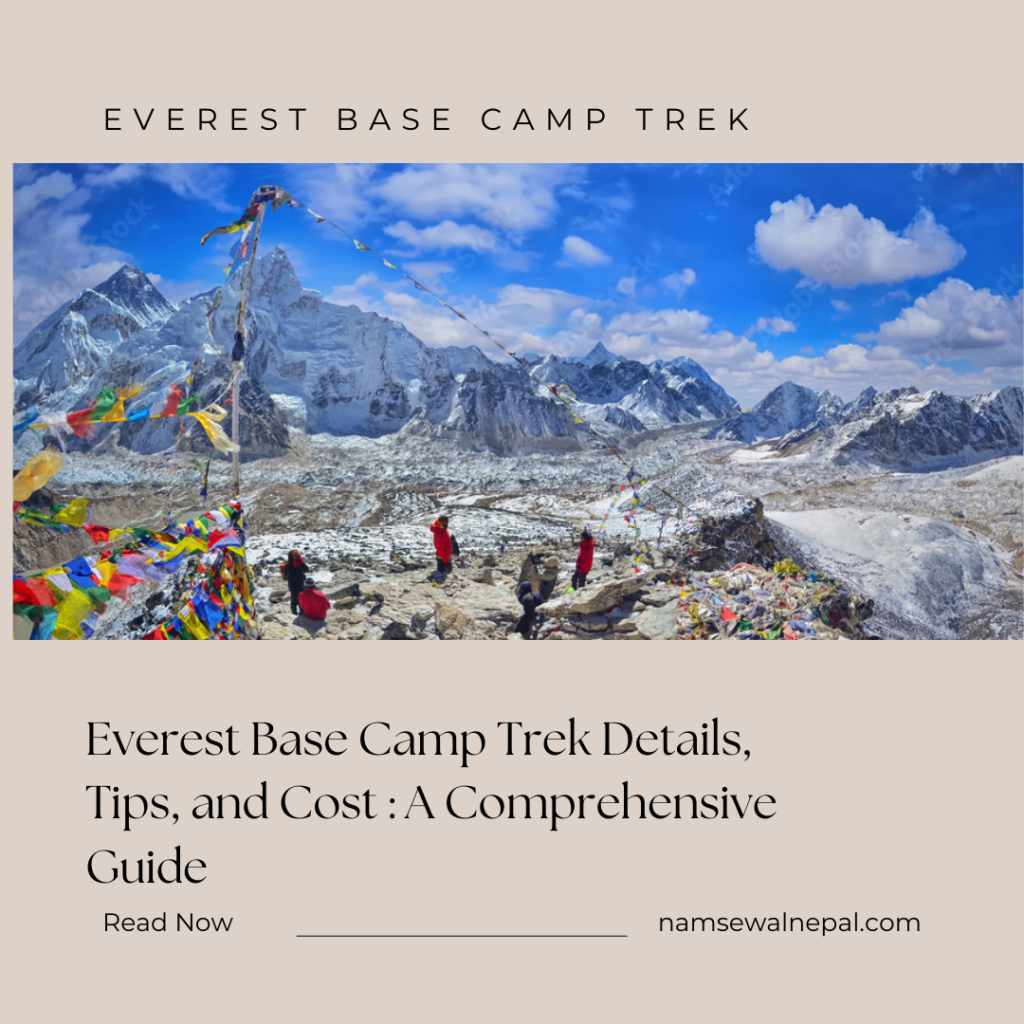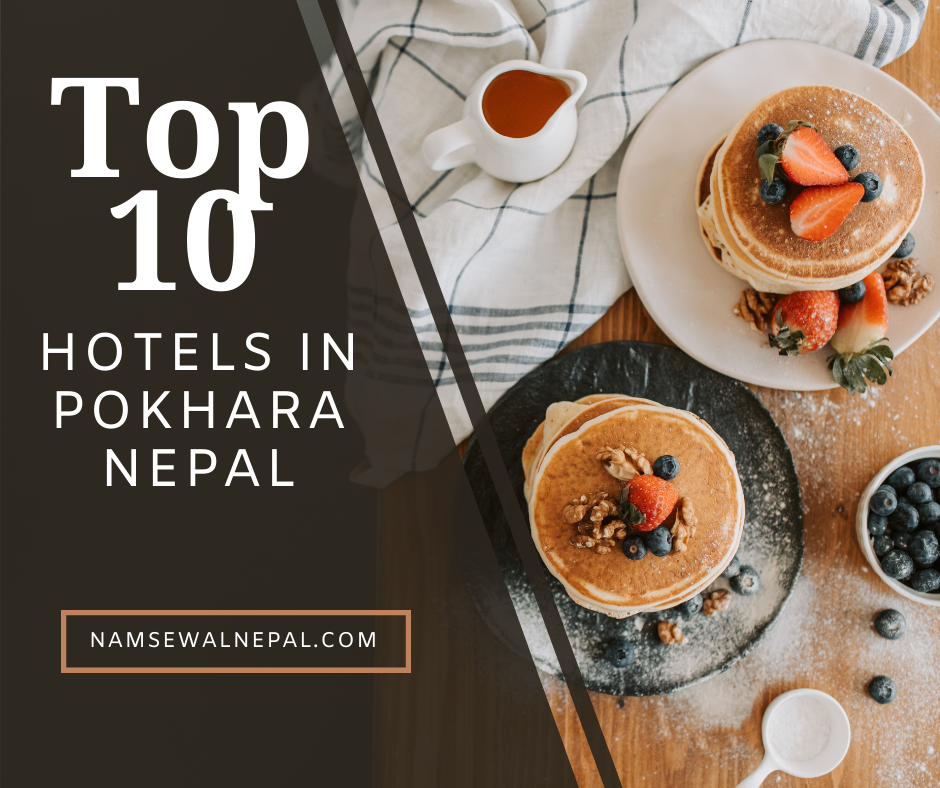Introduction
Traveling solo in Nepal, as in any country, comes with its set of challenges and rewards. Overall, Nepal is considered one of the safer destinations for solo travelers, but it’s essential to be aware of potential risks and take precautions.
The majestic mountains, rich cultural tapestry, and the raw, untouched beauty of Nepal beckon travelers from around the globe. Venturing solo into this Himalayan realm can be daunting yet thrilling. This comprehensive guide, packed with over 3000 words, will equip you to uncover and conquer Nepal in all its glory.

1. Know the Best Time to Traveling Solo in Nepal
The Pulse of the Seasons
Nepal sees distinct seasons, each offering a unique lens through which to experience the country.
Spring (March to May): Nature rejuvenates during these months. As rhododendron forests burst into color, moderate temperatures make for pleasant trekking. Clear skies ensure magnificent views of the snow-capped Himalayas.
Monsoon (June to August): Rain showers bring forth an earthy aroma, transforming landscapes into lush green. It’s less ideal for trekking, but the rain-soaked beauty of Kathmandu valley and glimpses of daily life are unmatched.
Autumn (September to November): Often considered the best trekking season, crisp air and minimal rainfall provide the clearest views of the Himalayas. Festivals like Dashain and Tihar add cultural richness.
Winter (December to February): Cold descends, especially at higher altitudes. However, the Terai region, with its national parks, offers a fantastic wildlife experience during this season.
Traveler’s Tip: Off-season travel ensures fewer crowds and discounted accommodations. Just be sure to pack accordingly!
2. Why Traveling Solo in Nepal?
a. Self-Discovery
Traveling solo pushes you out of your comfort zone. In Nepal, you’ll encounter diverse cultures, traditions, and landscapes that challenge and inspire you, leading to personal growth.
b. Flexibility
Without a group or partner, you’re free to change plans on a whim, stay longer in places you love, or move on if somewhere doesn’t resonate.
c. Authentic Experiences
Solo travelers often find it easier to immerse themselves in local culture. The Nepali people are known for their hospitality and are more likely to approach and interact with individuals.
3. Preparing for Traveling Solo in Nepal
a. Research
Familiarize yourself with Nepal’s geography, culture, and customs. Books, travel blogs, and documentaries can be invaluable resources.
b. Visa and Permits
Most nationalities can get a visa on arrival at Tribhuvan International Airport in Kathmandu. If you’re trekking, you’ll need permits, which can be obtained in Kathmandu or Pokhara.
c. Vaccinations
Consult your doctor about necessary vaccinations. Common recommendations include Hepatitis A, Typhoid, and Tetanus.
d. Packing
Pack light but efficiently. Essentials include a good pair of hiking boots, layers for varying climates, a rain jacket, and a first aid kit.
4. Learn Basic Nepali Phrases for Traveling Solo in Nepal
Language as a Cultural Bridge
While Nepal houses multiple languages, Nepali remains predominant. Picking up basics:
- Greetings: “Namaste” (Hello/Goodbye), “Dhanyabad” (Thank you)
- Numbers: “Ek” (One), “Dui” (Two), “Teen” (Three)
- Essentials: “Pani” (Water), “Khana” (Food)
Traveler’s Tip: Listening to Nepali songs or podcasts can help with pronunciation!
5. Stay Connected but Disconnect Too for Traveling Solo in Nepal
Balancing Safety and Solitude
- Stay Connected: Equip yourself with a local SIM card from providers like NTC or Ncell. Wi-Fi can be sporadic in remote areas.
- Disconnect: Embrace moments of solitude. Journal your experiences, meditate, or simply soak in the breathtaking vistas.
Traveler’s Tip: Power banks and solar chargers are lifesavers in areas with limited electricity.

6. Respect Local Traditions
Understanding Nepal’s Socio-Cultural
- Dress Code: Especially in rural areas, opt for modest attire. For temple visits, cover shoulders and knees.
- Customs: Rotate stupas clockwise. Avoid public displays of affection.
Traveler’s Tip: Engage in local workshops. Whether it’s pottery in Bhaktapur or Thangka painting in Thamel, immerse in Nepali culture.
7. Pack Smartly for Traveling Solo in Nepal
The Himalayan Checklist
- Clothing: Think layers! Base layers for warmth, mid-layers like fleece, and outer layers for wind/rain protection.
- Footwear: Invest in robust trekking boots. Add in comfortable sandals for city tours.
- Essentials: Sunscreen, hats, reusable water bottles, first aid, and altitude sickness tablets.
Traveler’s Tip: Vacuum-sealed bags save space and protect against unexpected rain.
8. Trust Your Instincts but Be Open for Traveling Solo in Nepal
Solo Travel Dynamics
- Accommodation: Opt for reputable hostels or teahouses. Check reviews or seek recommendations.
- Safety: Nepal is relatively safe, but always trust your gut. Inform someone about your plans, especially for treks.
Traveler’s Tip: Join forums or social media groups focused on travel in Nepal. Engage, ask questions, and even meet fellow solo travelers.
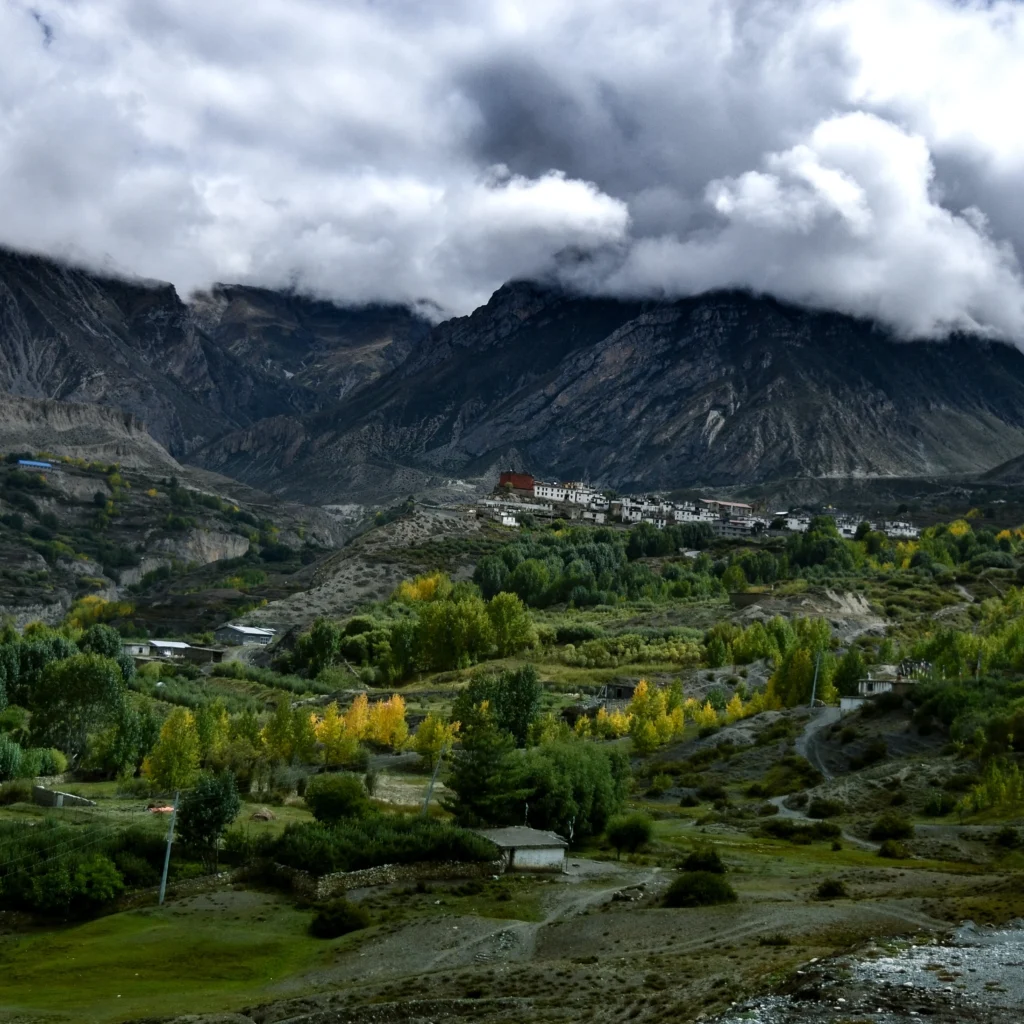
9. Join Group Activities
Creating Bonds on the Road
- Trekking Groups: Popular trails like Everest Base Camp or Annapurna Circuit have group treks. Joining ensures safety and camaraderie.
- Classes: From yoga in Pokhara to cooking classes in Kathmandu, group settings offer learning and interaction.
Traveler’s Tip: Local festivals or events can be a great platform to mingle. Don’t hesitate to join dances or ceremonies, with permission!
10. Is It Safe To Traveling Solo in Nepal?
Traveling alone in Nepal, as in any country, comes with its set of challenges and rewards. Overall, Nepal is considered one of the safer destinations for solo travelers, but it’s essential to be aware of potential risks and take precautions. Here’s a breakdown of the safety aspects for solo travelers in Nepal:
1. Personal Safety:
- People: Nepali people are generally warm, hospitable, and respectful towards tourists. Solo travelers often report feeling safe and welcomed.
- Harassment: While harassment is not widespread, it’s not unheard of, especially for solo female travelers. It’s advisable to dress modestly and avoid unnecessary attention.
- Night Safety: It’s safer to avoid walking alone at night, especially in less populated or unfamiliar areas.
2. Health Safety:
- Altitude Sickness: This is a concern for trekkers. It’s essential to acclimatize properly and be aware of the symptoms.
- Water and Food: Stick to bottled water and avoid street food that hasn’t been cooked freshly in front of you. This can help prevent traveler’s diarrhea and other food-related illnesses.
- Vaccinations: Before traveling, consult with a doctor about recommended vaccinations for Nepal.
3. Natural Disasters:
- Earthquakes: Nepal is in an earthquake-prone zone. Familiarize yourself with safety measures in case of tremors.
- Landslides: These can be a concern, especially during the monsoon season. If trekking, stay updated on the weather and trail conditions.
4. Trekking Alone:
- Guides: Even if you’re an experienced trekker, consider hiring a local guide. They know the terrain, can communicate in the local language, and can be lifesavers in emergencies.
- Stay on the Path: Stick to well-trodden paths and avoid trekking during late hours.
- Inform Someone: Always let someone know your trekking plans and expected return.
5. Scams and Theft:
- Beware of Overcharging: This can happen in touristy areas. Always negotiate prices beforehand, especially for taxis and rickshaws.
- Secure Your Belongings: Petty theft can occur. Use lockers in hostels/hotels and consider a money belt.
6. Local Customs and Laws:
- Respect Local Traditions: Nepal is culturally rich, and customs can vary. Dress modestly, especially in religious places, and be aware of local etiquettes.
- Drugs: While you might come across offers for illegal substances, especially in tourist areas, remember that drugs are illegal in Nepal, and penalties can be severe.
Conclusion:
While Nepal is relatively safe for solo travelers, it’s always essential to be vigilant, informed, and prepared. By taking necessary precautions and respecting local customs, solo travelers can have a rewarding and enriching experience in this beautiful Himalayan nation.
11. USEFUL SITES AND APPS FOR Traveling Solo in Nepal
If you’re planning a solo trip to Nepal, there are several websites and apps that can make your journey smoother and more enjoyable. Here’s a curated list:

1. Travel Planning & Information:
- Lonely Planet Nepal: The website offers comprehensive travel guides, tips, and forums where travelers share their experiences.
- TripAdvisor: For reviews on accommodations, restaurants, and attractions in Nepal.
2. Accommodation:
- Booking.com: Offers a wide range of accommodation options from luxury hotels to guesthouses.
- Airbnb: For unique stays, consider renting local homes or rooms.
- Hostelworld: Ideal for solo travelers looking for budget accommodations and opportunities to meet fellow travelers.
3. Transportation:
- eSewa: A popular digital wallet in Nepal that can be used to book bus tickets, flights, and more.
- Yeti Airlines and Buddha Air: These are major domestic airlines in Nepal. Their websites/apps provide flight schedules and online booking options for traveling between cities.
4. Trekking & Adventure:
- Maps.me: An offline map that’s particularly useful for trekking. It provides detailed maps of many trekking routes in Nepal.
- Nepal Trekking Guide: An app that offers information on various trekking routes, altitude sickness, and emergency contacts.
5. Language & Communication:
- Google Translate: While Nepali is the primary language, this app can help bridge the language gap in more remote areas.
- Hamro Nepali Keyboard: If you’re keen on typing in Nepali or learning the script, this app provides a Nepali keyboard for your device.
6. Safety & Health:
- TravelSafe: This app lists emergency numbers for every country, including Nepal.
- Altitude Sickness Info: Provides information on recognizing and dealing with altitude sickness, a concern for trekkers in Nepal.
7. Currency & Payments:
- XE Currency: For up-to-date exchange rates between your home currency and the Nepali Rupee.
- eSewa and Khalti: Popular digital wallets in Nepal that allow you to pay for a variety of services without cash.
8. Local Insights & Networking:
- Couchsurfing: Beyond finding free places to stay, this platform is great for meeting locals and attending events or meetups.
- Tandem: An app to connect with people keen on language exchange. It’s a fun way to learn some Nepali phrases from locals.
9. Weather:
- AccuWeather or Weather Underground: Stay updated on the weather, especially crucial if you’re trekking.
10. News & Local Updates:
- The Himalayan Times or Kathmandu Post: English newspapers that provide local news and updates.
Conclusion:
Arming yourself with these websites and apps can significantly enhance your solo trip to Nepal, making it easier to navigate, connect, and immerse yourself in the local culture. Safe travels!
Conclusion
Unraveling Nepal solo is not just a journey across terrains but also a soulful introspection. As you navigate through valleys, over mountain passes, and into the heart of bustling cities, you uncover layers of yourself previously unknown.
Nepal’s rich tapestry of experiences, from the serenity of monasteries to the adrenaline of white-water rafting, awaits the solo traveler. Embrace the adventure, rise to challenges, and let the spirit of the Himalayas resonate within you, urging you to shout, “Booyah!” at the pinnacle of every personal conquest. Safe and transformative travels!

